On the evening of May 20, Tuoi Tre newspaper updated information from Phu Loc District Forest Protection Department, saying that this unit had just received from Mr. Ho Van Phuong (born in 1997, residing in Nam Trach village, Loc An commune, Phu Loc district) a Buceros bicornis (ground phoenix), weighing about 3.5 kg, in stable health condition.
Mr. Phuong said that on May 19, the bird flew into his garden and got caught in the chicken coop net, so he and the people around him removed it and kept it in captivity.
After researching, he learned that this was a rare bird that needed to be protected, so he called the forest rangers to hand over the bird and release it back into the wild.
Currently, Phu Loc Forest Ranger Department is completing the necessary procedures and submitting them to competent authorities for approval to release them into the natural environment.

The hornbill is being cared for, protected, and waiting to be released back into the wild. Photo: Thua Thien Hue Newspaper
The hornbill is a species of the Bucerotidae family, with a body length of 119-122cm, light black plumage, white nape and neck, very large beak – light yellow, large beak pus.
Hornbills belong to group Ib – endangered forest animals, strictly prohibited from exploitation and use for commercial purposes.
Some pictures of the rare and extremely eye-catching hornbill:
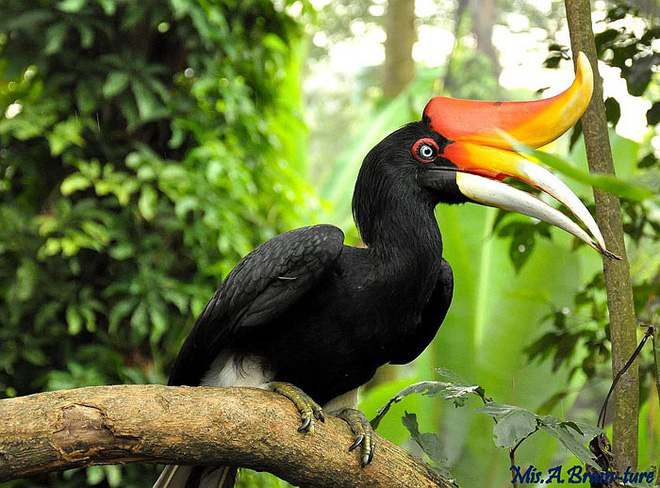
According to VTC News, the hornbill is a very rare bird in Vietnam. In Trang An (Ninh Binh), people sometimes see hornbills flying over the mountains.

The hornbill has a very special set of horns. At first glance, one might mistake it for someone who has playfully tied a wild banana flower with a very eye-catching yellow and red color on its head. Scientists have not found the function of these horns. Perhaps, they are just a tool to attract mates.
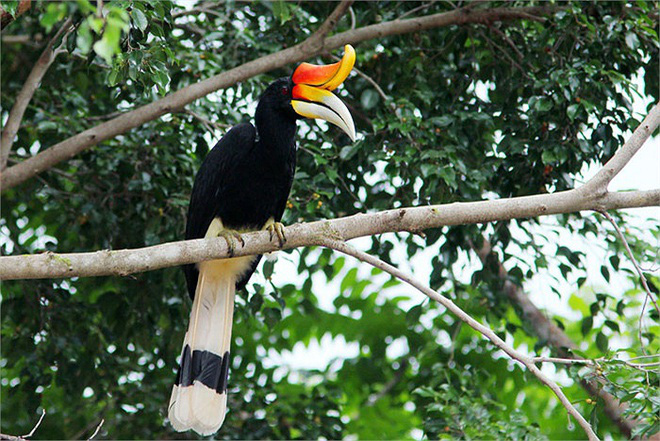
This bird lives mainly in the forests of India, Southeast Asia and southern China. The hornbill is quite long-lived, reaching a lifespan of 50 years in captivity.
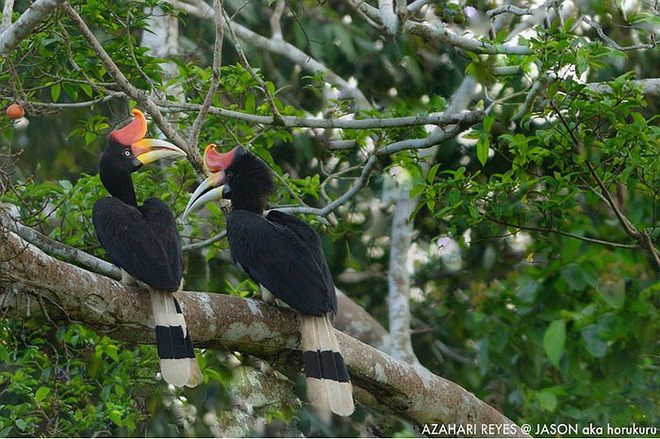
Many tribes in the deep forest believe that they are birds with supreme power. Therefore, the hornbill is chosen as a mascot. The hornbill is used as an offering and to welcome the gods in festivals.
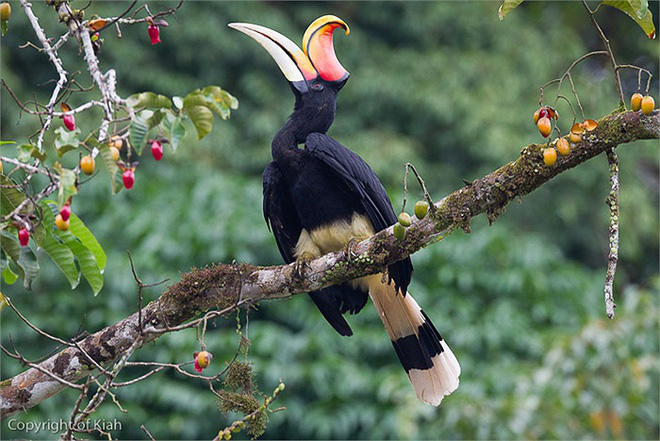
The total body length of the hornbill is from 95 – 122 cm, with a wingspan of up to 1.6 m.
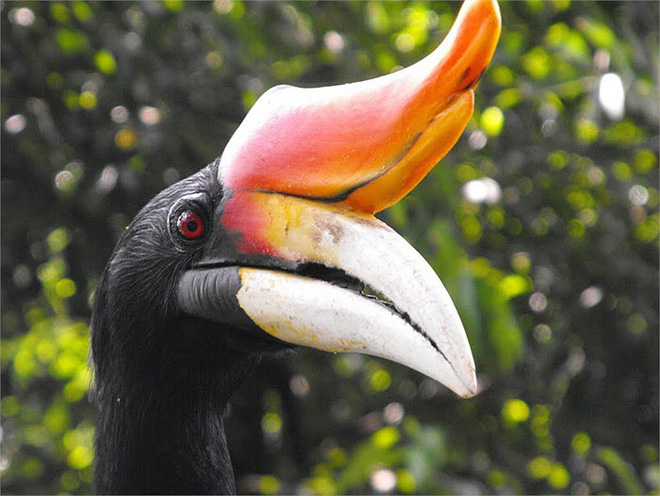
Like most hornbills, males have orange or red irises, while females have white pupils and blue irises. Their feathers are grey as juveniles, gradually turning jet black as adults. The hindquarters and tail are pure white, with a shiny black rim.
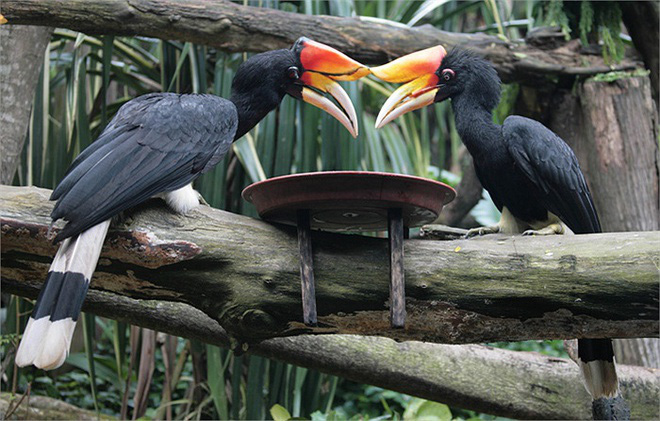
With the terrible rate of hunting by humans for meat and jewelry, this bird species has faced a great risk of extinction in the wild.





